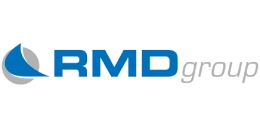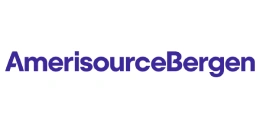Aluminum Air EV Battery Cost Model: Refining the Battery Manufacturing and Application
_11zon.webp)
What is Aluminum Air EV Battery?
Aluminum-Air (Al-Air) battery is a new energy storage technology that has attracted interest as a future alternative to conventional lithium-ion batteries, specifically for electric vehicle (EV) use. As opposed to normal rechargeable batteries, the Al-Air battery is a metal-air electrochemical cell with aluminum as the anode, oxygen from the ambient air as the cathode reactant, and a liquid electrolyte (commonly sodium hydroxide or potassium hydroxide) as the medium through which the reaction occurs.
Key Applications Across Industries:
The aluminum oxidizes to produce electricity, leaving a byproduct of aluminum hydroxide. The Al-Air battery is notable for its extremely high theoretical energy density of 8–10 times that of lithium-ion batteries, which allows cars to cover far longer driving ranges. Al-Air batteries are primary (non-rechargeable), however, so the aluminum anode must be replaced when exhausted. Nonetheless, the recycled aluminum is reusable, and the system is cost-saving and eco-friendly. Technology provides important benefits including light weight, safety, non-toxicity, and utilization of abundant raw materials, decoupling from the usage of scarce resources like cobalt and lithium. Firms and research organizations worldwide, most notably in Israel, India, China, and the United States are heavily investing in scaling up Al-Air battery systems for EVs, stationary storage, and defense purposes. The technology has tremendous potential to increase EV range and lower total cost of ownership, making way for the future generation of sustainable mobility solutions.
What the Expert Says: Market Overview & Growth Drivers
The global aluminum air EV battery market reached a value of USD 84.28 Million in 2024. According to IMARC Group, the market is projected to reach USD 323.02 Million by 2033, at a projected CAGR of 13.7% during 2025-2033. The global aluminum-air EV battery market is being spurred on by expanding requirements for high-energy-density and light power sources for extending the driving range of electric vehicles. With the constraints of lithium-ion technology—e.g., limited energy density, high cost, and raw material shortages, becoming more evident, aluminum-air batteries are in the process of evolving as a practical alternative.
Aluminum is readily available, cheap, and recyclable, which provides important cost and sustainability benefits over lithium and cobalt. Al-Air systems are thus highly appealing to automakers as well as governments advocating green mobility and circular economy solutions. In addition, the increased pressure for net-zero emissions, as well as ambitious government regulations on ICEs, are driving alternative battery technology research and pilot-scale implementation. Large EV producers and research centers are investing in hybrid solutions that integrate lithium-ion and aluminum-air batteries to weigh long range against recharging ease. Defense and unmanned vehicle use are also looking into Al-Air systems for their high energy density and persistence. Nations such as India and Israel are at the forefront of innovation in this area, for instance, Indian Oil Corporation and Phinergy are partnering to bring Al-Air technology into commercial application for EVs and renewable storage. The recyclability and energy efficiency of aluminum also complement international sustainability objectives. With infrastructure for aluminum refueling and recycling emerging, the aluminum-air battery industry is set to see rapid growth fueled by technological innovation, environmental regulations, and the shift toward electrification globally.
Case Study on Cost Model of Aluminum Air EV Battery Manufacturing Plant:
Objective
One of our clients reached out to us to conduct a feasibility study for setting up a medium scale aluminum air EV battery manufacturing plant.
IMARC Approach: Comprehensive Financial Feasibility
We developed a comprehensive financial model for the setup and operation of a proposed aluminum air EV battery manufacturing plant in India. This plant is designed to produce 500 units of aluminum air EV battery annually.
Manufacturing Process: The treatment of Aluminum-Air (Al-Air) batteries includes a multi-step process that converts raw aluminum and chemical materials into a high-energy-density electrochemical system for use in electric vehicles (EVs). The process starts with preparation of high-purity aluminum anodes, which are the source of energy. Aluminum plates or sheets are purified, alloyed, and treated for maximal corrosion resistance and electrochemical reactivity. The cathode is usually made up of a porous air-breathing electrode, in the form of carbon-based materials coated with catalysts like manganese oxide or cobalt oxide in order to reduce oxygen from the atmosphere. After preparation of the anode and cathode materials, they are then packaged into a cell structure that is divided by an ion-permeable membrane. The electrolyte, often a sodium hydroxide (NaOH) or potassium hydroxide (KOH) water solution, is added to provide ionic conductivity between electrodes. In operation, aluminum combines with oxygen from air to create aluminum hydroxide (Al(OH)3), producing electricity in the process. The byproducts of the reaction, including spent hydroxide and aluminum, can subsequently be recycled, a critical sustainability benefit of this battery technology. The last processing phase consists of cell sealing, testing, and battery module or EV range extender integration. All batteries are subjected to quality assurance tests in current density, discharge rate, voltage stability, and leakage protection. Contemporary producers increasingly look at modular and recyclable Al-Air systems, in which aluminum anode cartridges are replaced easily, improving vehicle range and circular material use in electric mobility.
_11zon.webp)
Get a Tailored Feasibility Report for Your Project Request Sample
Raw Material Required:
The basic raw materials required for aluminum air EV battery manufacturing include:
- Aluminum Sheet/Foil
- Activated Carbon
- Electrolyte Solution
- Separator
- Catalyst
- Conductive Wire
- Current Collectors
- Sealing Materials
- Plastic Casing
Machineries Required:
- Sheet Cutting Machine
- Roller Press / Sheet Rolling Machine
- Surface Cleaning Equipment (Ultrasonic Cleaner, Alkaline Wash Tank or Chemical Etching Tank)
- Coating Machine
- Powder Mixing Machine
- Coating Machine / Doctor Blade Machine, Roll Press / Calendering Machine
- Drying Oven
- Lamination Machine
- Die Cutting Machine / Laser Cutter
- Soaking Tank / Coating Bath
- Chemical Mixing Tank
- Stirrer / Agitator
- Measuring & Dosing System
- Assembly Jigs and Fixtures
- Electrolyte Filling Machine
- Sealing Machine
- Robotic/Manual Press
- Interconnect Welding Machine
- Housing Assembly Line
- Insulation And Terminal Assembly Tools
- Battery Analyzer / Tester
- Leak Testing Equipment
- Environmental Chamber
Techno-Commercial Parameter:
- Capital Expenditure (CapEx): Capital expenditure (CapEx) in a manufacturing plant includes various investments essential for its setup and long-term operations. It covers machinery and equipment costs, including procurement, installation, and commissioning. Civil works expenses involve land development, factory construction, and infrastructure setup. Utilities such as power, water supply, and HVAC systems are also significant. Additionally, material handling systems, automation, environmental compliance, and safety measures are key components. Other expenditures include IT infrastructure, security systems, and office essentials, ensuring operational efficiency and business growth.
- Operating Expenditure (OpEx): Operating expenditure is the cost incurred to operate a manufacturing plant effectively. Opex in a manufacturing plant typically includes the cost of raw materials, utilities, depreciation, taxes, packing cost, transportation cost, and repairs and maintenance. The operating expenses are part of the cost structure of a manufacturing plant and have a significant effect on profitability and efficiency. Effective control of these costs is necessary for maintaining competitiveness and growth. Furthermore, raw material cost in an aluminum air EV battery manufacturing plant ranges between 65-80%, utility cost ranges between 10% to 15%, and all other costs ranges between 10-25% in the proposed plant.
- Profitability Analysis Year on Year Basis: We assisted our client in developing a detailed cost model, which projects steady growth, with revenue rising throughout the projected period. Moreover, gross profit margins lie between a range of 20-25%, and net profit lie between the range of 15-20% during the income projection years, highlighting strong financial viability and profitability.
Conclusion & IMARC's Impact:
Our financial model for the aluminum air EV battery manufacturing plant was meticulously developed to meet the client’s objectives, providing an in-depth analysis of production costs, including raw materials, manufacturing, capital expenditure, and operational expenses. By addressing the specific requirements of manufacturing 500 units of aluminum air EV battery annually, we successfully identified key cost drivers and projected profitability, considering market trends, inflation, and potential fluctuations in raw material prices. This comprehensive financial model equipped the client with valuable insights into strategic decision-making, demonstrating our commitment to delivering high-quality, client-focused solutions that ensure the long-term success of large-scale manufacturing ventures.
Latest News and Developments:
- In May 2025, AlumaPower received Ontario Vehicle Innovation Network (OVIN) Research and Development (R&D) partnership fund. AlumaPower Corporation (Sarnia) and Festival Hydro will use the cutting-edge "Aluminum-air Galvanic Generator" to conduct a field test of a novel type of grid-independent power generator for EV charging.
- In February 2024, the clean chemistry firm AZUL Energy, which creates catalysts for cutting-edge energy systems, revealed that it has secured ¥475 million in Series A funding. The business has created a high-performance catalyst that performs similarly to rare metal catalysts (like platinum) but without the substantial resource limitations or exorbitant pricing. To encourage a decarbonised and recycling-focused society, they plan to use it in a variety of applications, including water electrolysers and metal-air batteries.
- In February 2024, Indian Oil Corporation has made a second investment round in Phinergy, an Israeli clean energy business, increasing the total investment to US$ 25 million. Indian Oils now owns 17% more of Phinergy as a result of this investment. With the help of its local subsidiary, Phinergy will be able to grow its operations in India, boost system manufacturing, and move closer to a data centre application with a major US cloud provider.
Why Choose IMARC:
IMARC's Financial Model Expertise: Helping Our Clients Explore Industry Economics:
IMARC is a global market research company that offers a wide range of services, including market entry and expansion, market entry and opportunity assessment, competitive intelligence and benchmarking, procurement research, pricing and cost research, regulatory approvals and licensing, factory setup, factory auditing, company incorporation, incubation services, recruitment services, and marketing and sales.
Under our factory setup services, we assist our clients in exploring the feasibility of their plants by providing comprehensive financial modeling. Additionally, we offer end-to-end consultation for setting up a plant in India or abroad. Our financial modeling includes an analysis of capital expenditure (CapEx) required to establish the manufacturing facility, covering costs such as land acquisition, building infrastructure, purchasing high-tech production equipment, and installation. Furthermore, the layout and design of the factory significantly influence operational efficiency, energy consumption, and labor productivity, all of which impact long-term operational expenditure (OpEx). So, every parameter is covered in the analysis.
At IMARC, we leverage our comprehensive market research expertise to support companies in every aspect of their business journey, from market entry and expansion to operational efficiency and innovation. By integrating our factory setup services with our deep knowledge of industry dynamics, we empower our clients to not only establish manufacturing facilities but also strategically position themselves in highly competitive markets. Our financial modeling and end-to-end consultation services ensure that clients can explore the feasibility of their plant setups while also gaining insights into competitors' strategies, technological advancements, and regulatory landscapes. This holistic approach enables our clients to make informed decisions, optimize their operations, and align with sustainable practices, ultimately driving long-term success and growth.
Our Clients
Contact Us
Have a question or need assistance?
Please complete the form with your inquiry or reach out to us at
Phone Number
+91-120-433-0800+1-201-971-6302
+44-753-714-6104











